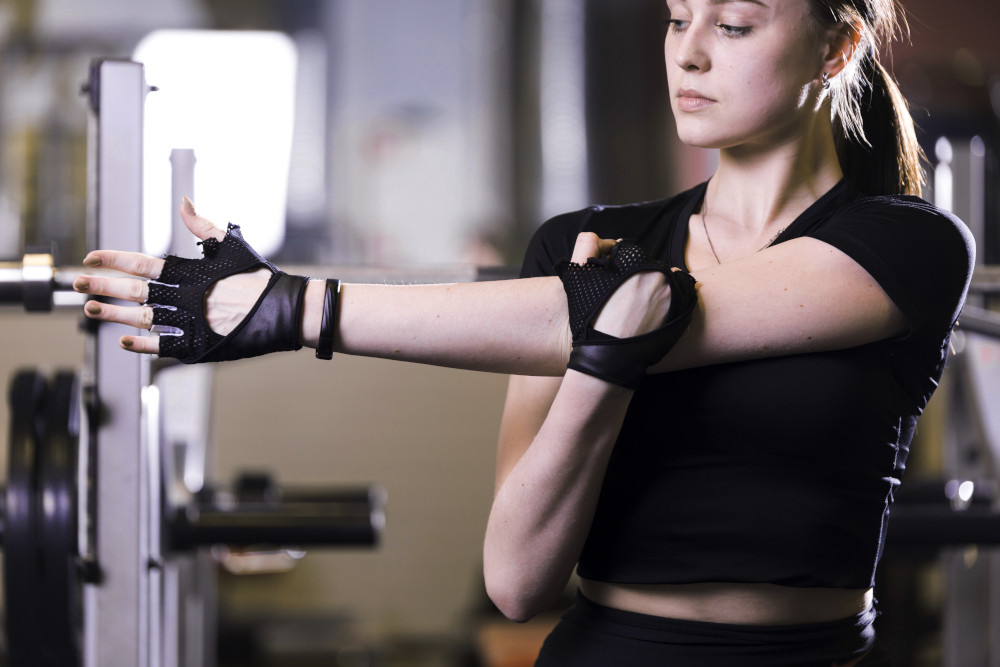Dealing with wrist pain from weightlifting and benching can be a common challenge for many gym-goers. This article provides tips and techniques to help alleviate wrist pain, including alternatives to traditional lifting techniques, addressing muscle imbalances and weaknesses, managing overuse and repetitive stress, enhancing flexibility and mobility, and understanding underlying conditions. Advanced tips for wrist pain management, such as cross-training and variation, ergonomic modifications, and the importance of recovery and rest, are discussed. By incorporating these strategies into your fitness routine, you can work towards a pain-free and effective weightlifting experience.
Are you experiencing wrist pain after hitting the gym, particularly during weightlifting sessions or benching exercises? Wrist pain from gym workouts can be a frustrating setback for anyone striving to achieve their fitness goals. However, understanding the causes and implementing proper techniques can help alleviate discomfort and prevent further injury. In this blog post, we’ll delve into the reasons behind wrist pain from gym workouts, and provide practical tips to mitigate it, specifically focusing on weightlifting and benching.

Understanding Wrist Pain from Gym Workouts
Wrist pain from gym workouts can occur for various reasons, ranging from improper form to overuse injuries. When it comes to weightlifting and benching, several factors can contribute to wrist discomfort.
Improper Wrist Alignment
Incorrect wrist positioning, such as excessive bending or hyperextension, can strain the delicate structures within the wrist joint, leading to pain and discomfort.
Excessive Load
Lifting weights that are too heavy or attempting to bench press beyond your current strength level can place undue stress on the wrists, resulting in pain and potential injury.
Lack of Warm-Up
Failing to adequately warm up before engaging in weightlifting exercises can restrict blood flow to the wrists and make them more susceptible to injury.
Tips for Alleviating Wrist Pain from Gym Workouts
Focus on Form
Proper form helps to prevent wrist pain during weightlifting and benching. Ensure that your wrists are in a neutral position, aligned with your forearms, throughout the exercises. Avoid excessive bending or twisting of the wrists.
Warm-Up Routine
Dedicate time to a comprehensive warm-up routine that includes wrist mobility exercises and dynamic stretches. This helps increase blood flow to the wrists and prepares them for the demands of your workout.
Grip Variation
Experiment with different grip variations to find the one that feels most comfortable and minimizes wrist strain. For bench pressing, consider using a wider grip or employing dumbbells instead of a barbell to reduce wrist discomfort.
Use Wrist Support
Invest in wrist wraps or supportive gear to provide stability and reduce strain on the wrists during heavy lifts. Wrist wraps can help maintain proper alignment and distribute the load more evenly.
Gradual Progression
Avoid the temptation to lift heavier weights than you can handle comfortably. Gradually increase the intensity and weight of your workouts to allow your wrists to adapt and strengthen over time.
Alternatives to Traditional Techniques
If wrist pain from gym workouts persists despite implementing these strategies, consider incorporating alternative exercises that place less stress on the wrists.
Dumbbell Exercises
Substitute barbell exercises with dumbbell variations, as they offer greater wrist flexibility and control. Dumbbell presses, rows, and curls can be effective alternatives to traditional barbell lifts.
Machine-Based Workouts
Utilize gym machines for exercises like chest and shoulder presses, as they provide additional support and stability for the wrists.
Bodyweight Exercises
Explore bodyweight exercises and calisthenics routines that minimize wrist involvement, such as push-ups, planks, and dips.
While wrist pain from gym workouts can be a nuisance, it’s important to also understand that it often stems from preventable causes and can be managed effectively with the right approach. Let’s delve deeper into some of the factors contributing to wrist discomfort during weightlifting and benching, along with additional strategies to address and prevent it.
Muscle Imbalances and Weakness
Wrist pain can arise when there’s an imbalance between the muscles surrounding the wrist joint. Weakness in the forearm muscles, particularly the wrist flexors and extensors, can lead to instability and susceptibility to injury. Incorporating targeted forearm strengthening exercises into your routine can help correct imbalances and enhance wrist stability.
Overuse and Repetitive Stress
Engaging in repetitive movements, such as repetitive gripping or lifting heavy weights without adequate recovery, can strain the wrist joints and surrounding tissues. Incorporate rest days into your training schedule and vary your exercises to prevent overuse injuries. Practicing proper lifting techniques and avoiding excessive wrist deviation can reduce the risk of repetitive stress injuries.
Flexibility and Mobility Limitations
Limited wrist mobility or flexibility can exacerbate wrist pain during weightlifting exercises. Tightness in the wrist flexors, extensors, and forearm muscles can restrict movement and increase strain on the joints. Regular stretching and mobility exercises targeted at improving wrist flexibility can help alleviate discomfort and enhance range of motion.
Underlying Conditions
In some cases, wrist pain may be attributed to underlying medical conditions such as tendonitis, carpal tunnel syndrome, or arthritis. If you suspect that an underlying condition is contributing to your wrist pain, consult with a healthcare professional for proper diagnosis and treatment recommendations. They may recommend specific exercises, therapies, or modifications to address your condition effectively.

Advanced Tips for Wrist Pain Management
Foam Rolling and Self-Myofascial Release (SMR)
Incorporating foam rolling and SMR techniques into your warm-up and cool-down routines can help release tension in the muscles surrounding the wrist joint. Focus on rolling out the forearms, wrists, and hands to promote blood flow, reduce muscle tightness, and enhance mobility.
Cross-Training and Variation
Incorporating cross-training activities and varying your workout routine can help reduce overuse injuries and prevent wrist pain from gym workouts. Incorporate activities such as swimming, yoga, or cycling, which provide a break from repetitive gripping and lifting motions while still promoting overall fitness and strength.
Ergonomic Modifications
Pay attention to your workout environment and make ergonomic adjustments to minimize wrist strain. Ensure that your equipment, such as barbells, dumbbells, and handles, is appropriately sized and positioned to promote proper wrist alignment. Consider using lifting straps or grips to reduce the load on your wrists during heavy lifts.
Recovery and Rest
Prioritize adequate rest and recovery between workouts to allow your wrists time to recover and repair. Incorporate techniques such as ice therapy, compression, and elevation (RICE) to reduce inflammation and promote healing after intense training sessions. Incorporate gentle mobility exercises or low-impact activities on rest days to promote blood flow and facilitate recovery.
Wrist pain from gym workouts, particularly during weightlifting and benching, can hinder your progress and enjoyment of exercise. By prioritizing proper form, incorporating wrist-friendly techniques, and listening to your body, you can alleviate discomfort and continue pursuing your fitness goals safely. Remember to consult with a fitness professional or healthcare provider if you experience persistent or severe wrist pain to ensure proper diagnosis and treatment. If wrist pain from gym workouts persists or worsens despite your efforts, don’t hesitate to seek guidance from a qualified healthcare professional or certified fitness trainer. Your first step toward healing and feeling better is to schedule an appointment for a professional evaluation. Schedule an appointment today – complete and submit the request form by the link: https://sportscare-armworks.com/request-an-appointment/. Choose the preferred service and location in the Portland area. If you contact us after business hours, we will get back to you the next business day. We look forward to hearing from you!

